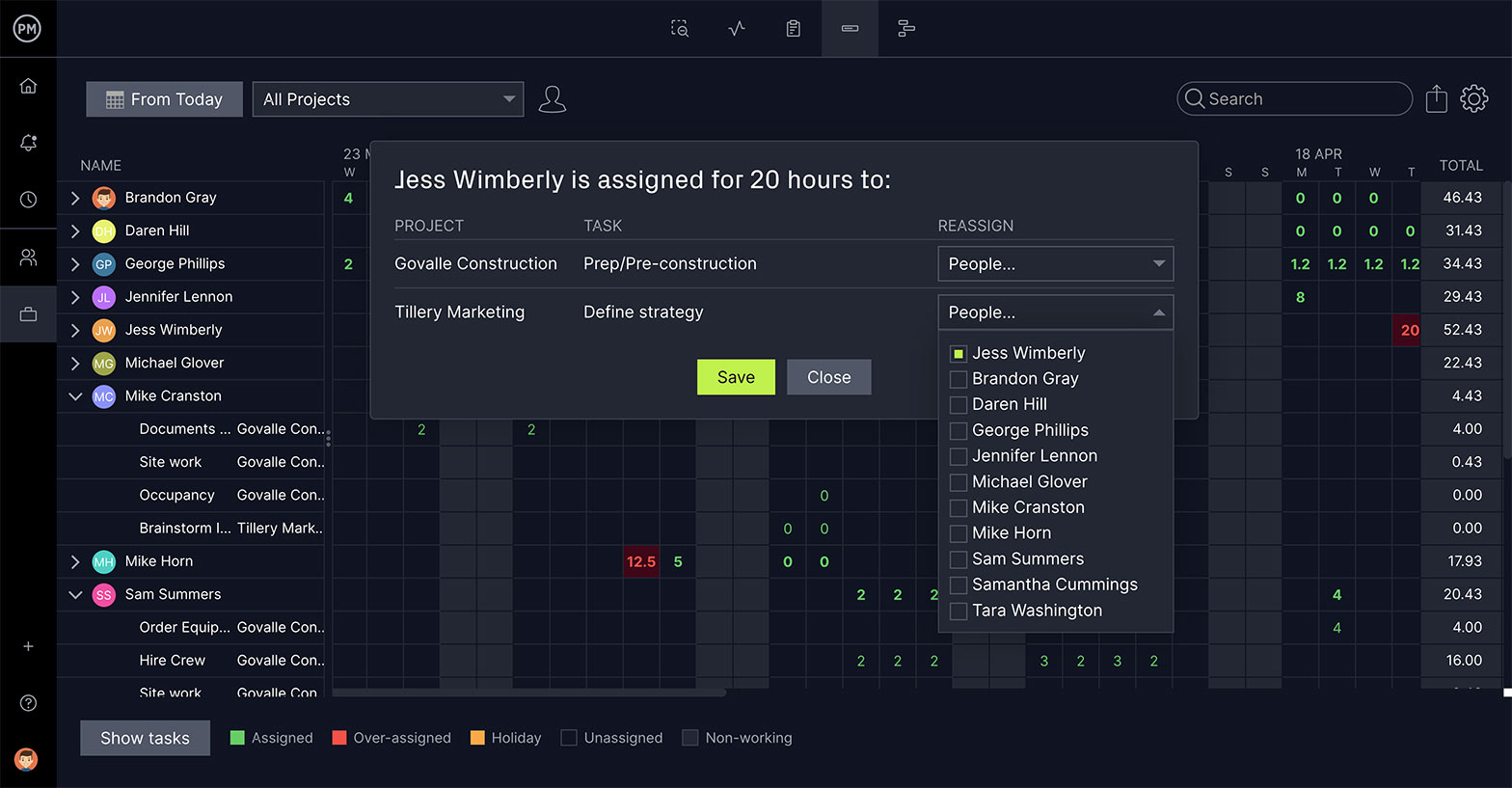Construction projects are complicated. It’s no surprise that there are changes that impact the work. In order for those surprises to impact the construction plan as minimally as possible, the industry uses something called a construction change order.
All projects have change orders, but what is a construction change order and when should you use it? We’ll answer those questions as well as outline the process when managing construction change orders. To further help, there is a change order template included and, of course, how construction project management software goes even further.
What Is a Construction Change Order?
The construction change order is simply a contract amendment between the construction company and its client, which usually defines a change in the scope of work. This is fully documented and often will add to the agreed-upon contract price, project timeline or both.
However, construction change orders aren’t simply demanded but requested. Both the construction contractor and the owner must both agree on the terms of the construction change order before it’s implemented into the project.
There are many reasons for a construction change order. The owner might ask for a wall, door or window to be placed somewhere other than where it had been designed in the layout in order to work better with another design element. That’s an additive change order. Other construction change orders delete rather than add, which are called deductive change orders. These can reduce the price of the contract.
Whatever the reason for the construction change order, the contractor has to implement it without as little disruption to the project plan as possible. ProjectManager is online construction project management software that helps you track change orders in real time. Use our kanban board project view to add the construction change order and have a visual tool to track its workflow as it moves from to do, doing and done. You can attach documents and images, comment, add tags, priority and much more. Get started with ProjectManager today for free.
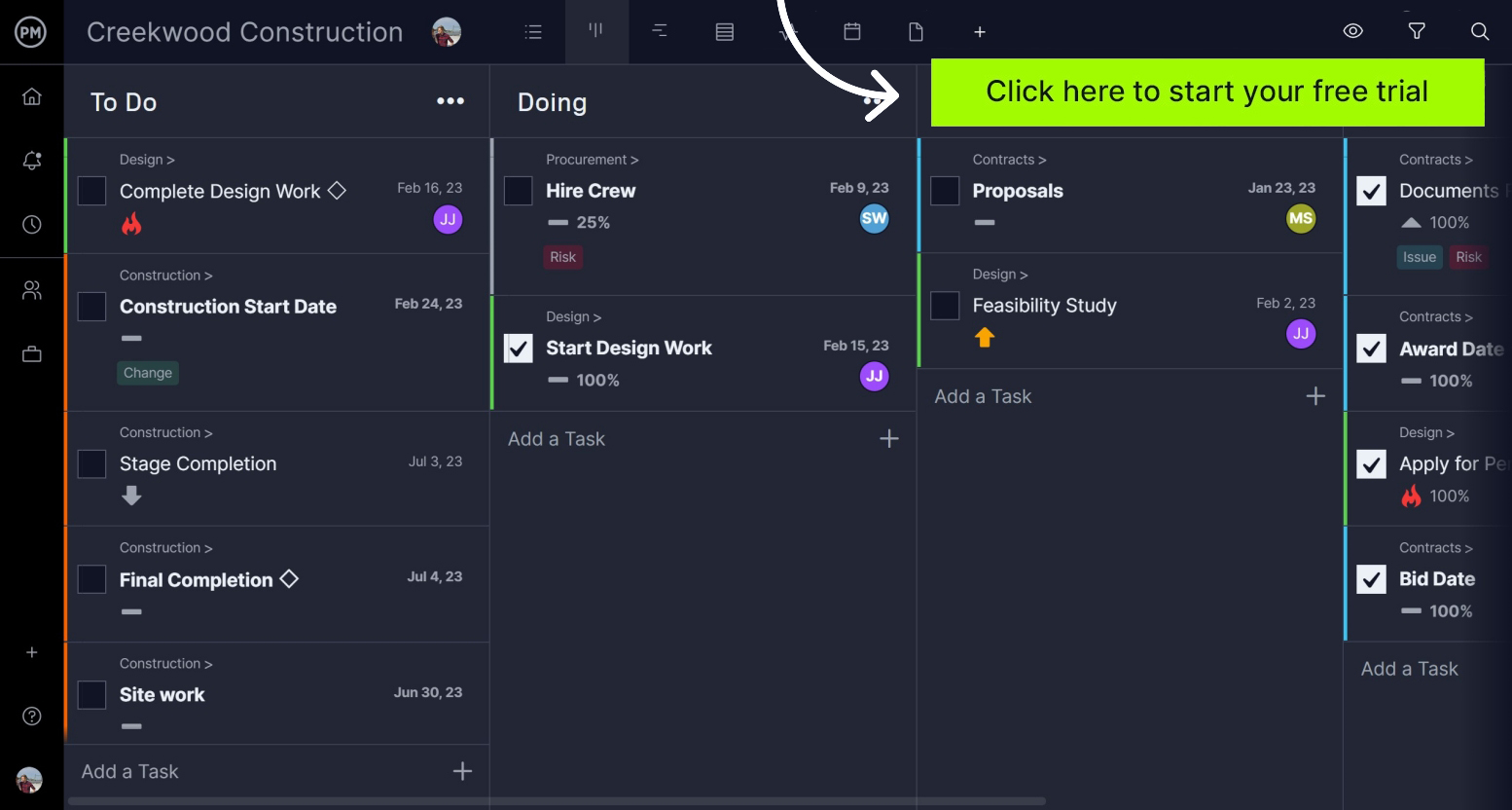
When Should You Use a Construction Change Order?
Construction change orders can occur throughout the execution of the project plan. More construction projects than not will have at least one over the course of the project’s life cycle. Therefore, it’s important that construction contractors are aware of this and plan accordingly.
Projects will use a construction change order for many reasons, some of which we’ve noted above. Other reasons include errors in design, inadequate scope, weather making construction impossible and inaccurate estimates of the project’s timeline. All of these, and many more, will have contractors using construction change orders.
Anyone who’s leading a construction project should be ready for managing change. The more you understand what can cause these changes to the project’s scope and the better you plan for them, the faster and less impactful the changes can take place.
Construction Change Order Management Process
If nothing is constant other than change, then a process needs to be in place in order to manage the construction change orders that occur over the course of the project. The following are the basic steps that need to be taken when managing the construction change order process. Before you commit to a process, though, make sure that the clients and subcontractors have signed on to it.
Begin With the Contract
Since a construction change order is just an addition to the contract between the construction contractor and their client or owner, the contract is the starting point for all change orders that’ll impact the project’s scope of work. Before the contract is signed, be sure to read it carefully. In this case, you want to pay close attention to any clauses that relate to change orders, such as those that regard the timeframe, documentation and who is authorized to approve the change.
Review the Project Plan
The next step is to look over the construction plan and specifications. Carefully review your construction documents to see if there are any errors, omissions or ambiguities in the scope that the owner and architect need to correct before construction begins. Catching these issues in the plan and specifications will prevent costly and timely construction change orders during the execution of the plan.
Respond Quickly to Change Orders
Whether the contractor or owner requests a construction change order, it should be expedited sooner than later. Delays will likely only add to the expense of time spent responding to the change order. Don’t wait until the last minute as tempting as it might be to put the change order on the back burner. It’s critical to quickly get the change in writing and make adjustments to the schedule and costs. Otherwise, you’ll have a backlog of construction change orders that could derail the project or worse.
Meet With All Involved Parties
Not only must the contractor and owner meet to discuss the change before it’s documented and come to an agreement about the cost and impact on the schedule, but they should also stay in communication throughout the process. This includes understanding the reason for the change order and how to manage it. Without an agreement, the change will be more disruptive. Define the new scope of work with the owner or their authorized agent. Don’t neglect the subcontractors who will have to make adjustments to their schedules. Let them know how the change will impact their work and define workflows clearly. Then keep everyone updated as the construction work order is executed.
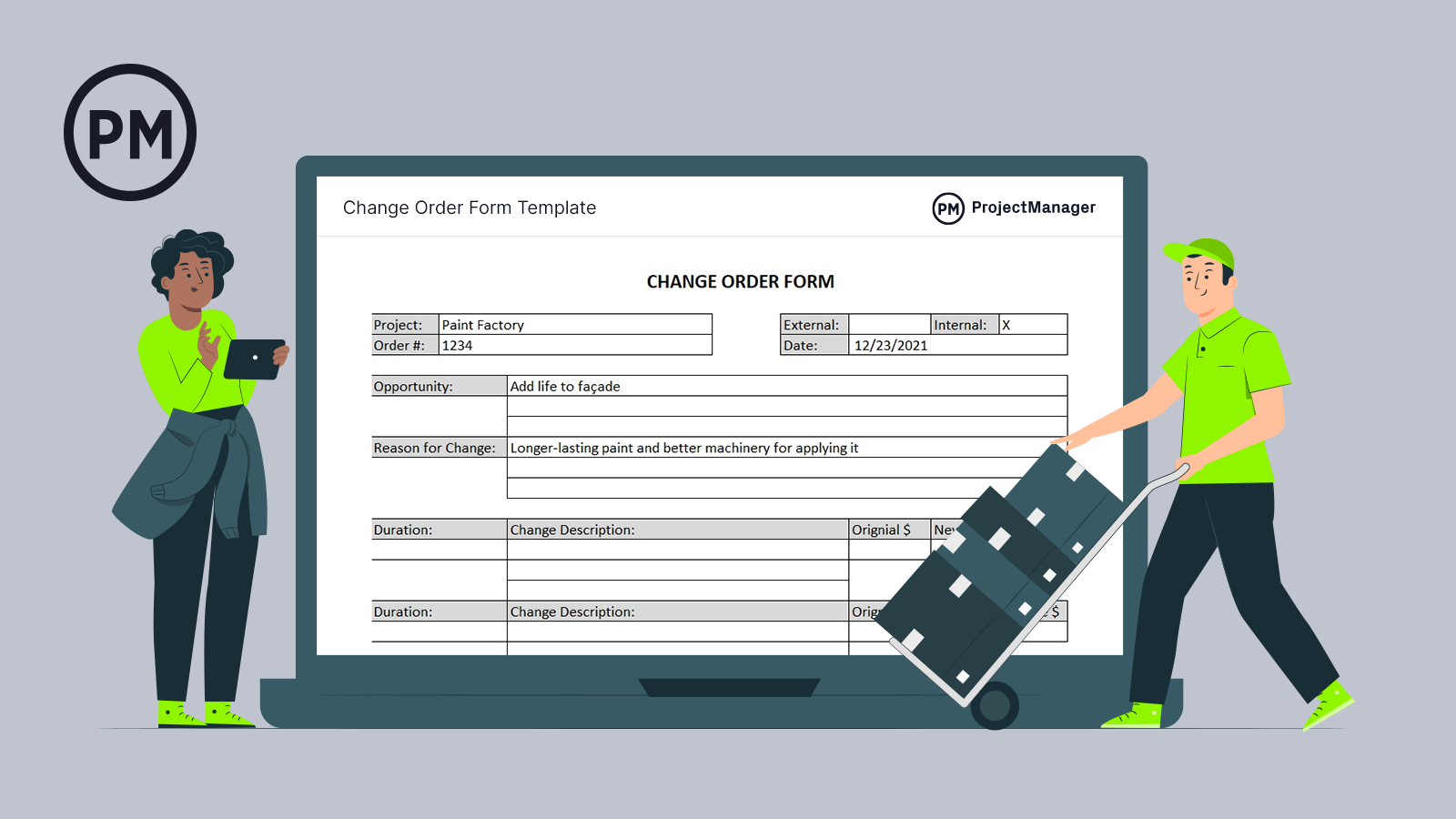
Get your free
Change Order Template
Use this free Change Order Template for Excel to manage your projects better.
Further Negotiations
Negotiations are the final phase of the construction change order process before you begin working. All parties might not come to an agreement immediately. There can be disagreements on the impact on the project’s scope of work and issues related to cost and timeline. First, get the owner to agree on the cost of the change, whether pricing, time or materials, though it can be negotiated as a lump sum, too. Sometimes this is already defined in the contract, which makes the process easier. This step is a push and pull between the contractor and the owner that should result in a decision with which all are comfortable.
Don’t Neglect Documentation
Clearly documenting the construction change order process helps avoid unnecessary disputes and keeps the work moving forward without costly delays. Every step of the process should be documented and signed off on. Keep written records of all communications between contractor, owner and subcontractors. Once everyone is in the agreement, have them sign off to make sure they know the cost and impact on the schedule. Even during the execution of the change order, it’s crucial to document the work and share those documents to keep everyone updated.
What Should a Construction Change Order Include?
A construction change order needs to capture the pertinent information about the change. In order to do that there are a number of areas that are essential. Though individual construction change orders can differ, they all should have the following details included.
- Interoffice information: The name of the construction project will make it easier to find, especially if you’re working on multiple projects at once. Include the order number to differentiate this order from other construction change orders in the project. Note if the change is internal or external and add the date of the change order.
- Define the change: Note the type of change order. There are four construction change orders: time and material (cost cannot be established), lump sum (quantifiable work scope), zero cost (doesn’t change contracted price) and unitary cost (based on unitary cost schedule values). Then explain the reason for the change and if there’s an opportunity associated with it.
- Describe the change: Write a detailed description of what’s being requested so everyone knows the work that must be done to close the construction change order. Include the materials and labor and estimate the duration of the work. Pricing should also be forecasted here.
- Sign and date change order: The last step is for all parties involved to sign off on the construction change order and add a date to their signature. This ensures that everyone is aware of what was agreed on and will uphold their end of the contract.
Change Order Template
Standardizing the construction change order process creates consistency and means you don’t have to waste time creating new documents each time a change is introduced into the project. One way to do this is by using a template. ProjectManager has dozens of free project management templates for Excel and Word that are available to download from our site.
Our free change order form template for Excel can be used for construction change orders or any industry that has change orders. Use this free project management template whenever you have to capture change, define the change and make sure everyone agrees on the work that will be done.
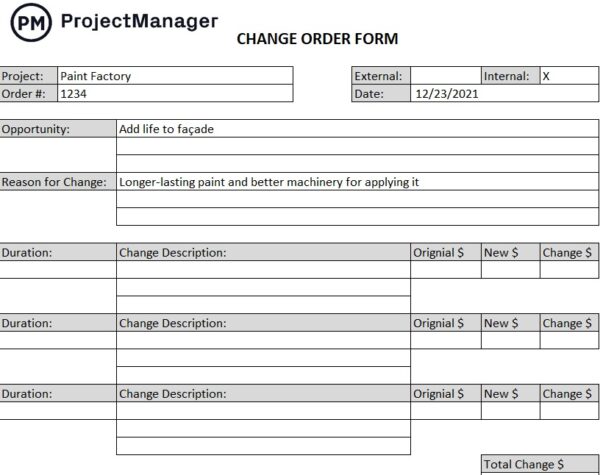
We offer a variety of free construction project management templates for Excel you can use to manage all aspects of your project.
ProjectManager Helps You Manage Construction Change Orders
Our free change order template is a great tool to get everyone on the same page, but then you have to do the work. That’s where construction project management comes in. You’ve already seen how ProjectManager’s online software has kanban boards to track the change order in real time. That’s just one of the multiple project views in our tool. Subcontractors can use the task list if they prefer. All data is updated instantly and populates all project views so no matter which view you’re using you’re seeing more current information.
Manage Your Team’s Workload
Construction change orders can impact your cost and schedule. We have resource management features that help you mitigate the impact on your project. Once you’ve onboarded the team and subcontractors, their availability is in the system, making it easy to assign them tasks. Then look over at the workload chart, which is color-coded so you can see who is allocated too many or too few tasks. You can then assign them right from the chart and balance everyone’s workload to keep them productive and not over-allocate anyone and ding morale.

Get a High-Level View of Your Progress
Your resources are not the only metric that you need to track. Our software has a built-in dashboard that requires no time-consuming configuration as with other lightweight tools. It’s ready to go when you are, capturing live data and displaying it in easy-to-read graphs and charts. You can keep track of costs, time and much more, all in real time. When you want to get more detail use the customizable reports for timesheets, status and other project metrics. They can be easily shared to keep the client, owner or stakeholders updated.
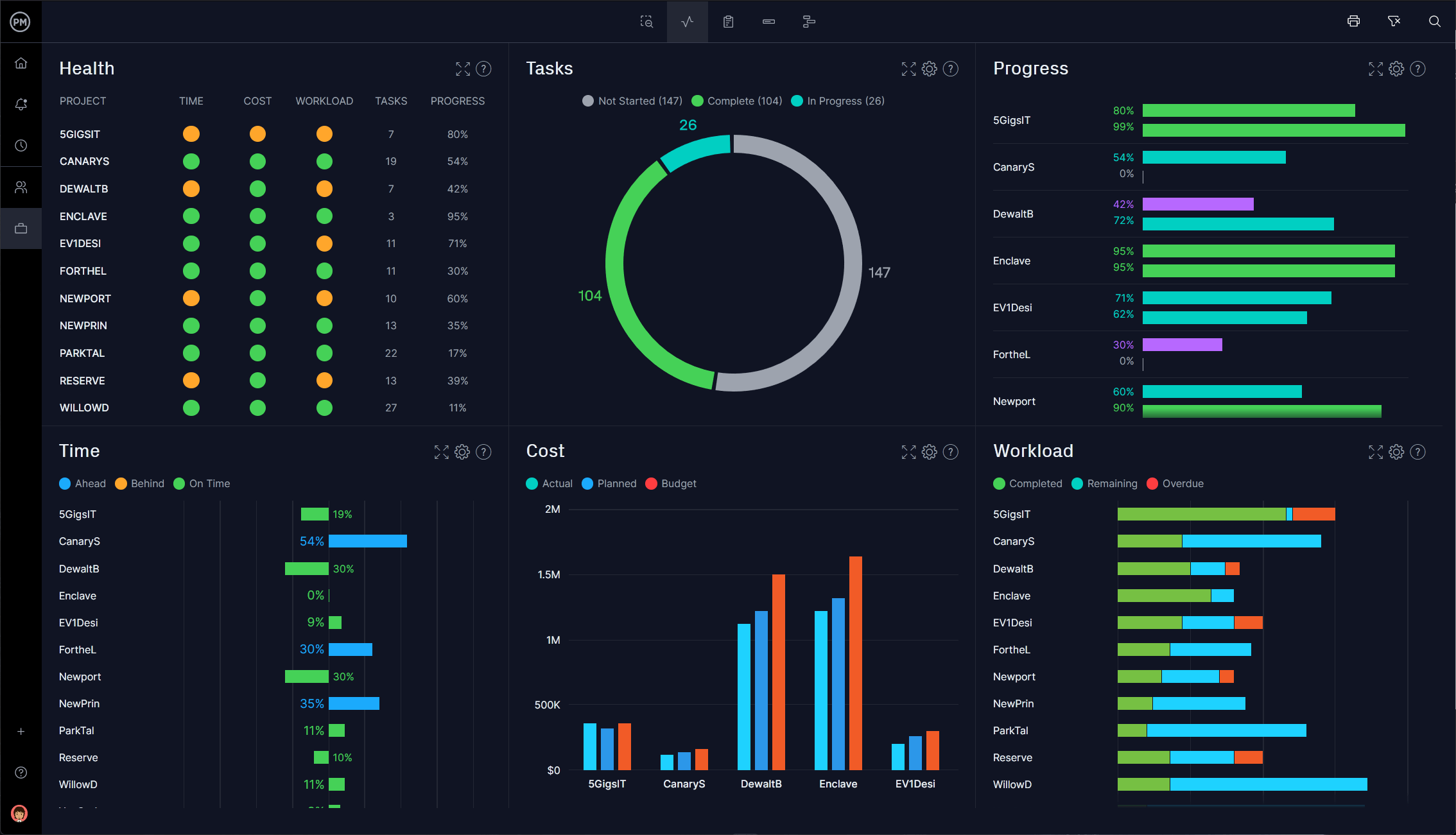
There are more features that help you manage construction change orders, such as secure timesheets that not only streamline the payroll process but show you how many hours each team member has spent on their tasks. From Gantt charts to schedule and even portfolio management features to manage more than one project, our software gives you the tools you need to make project changes and stay on schedule.
Related Construction Content
ProjectManager isn’t only great construction project management software, but it’s also an online hub for everything project management. We publish weekly blogs, feature tutorial videos, guides and, of course, free templates. If you’re looking for more content on construction project management, you’ve come to the right place. Follow these links to read about everything from making a construction schedule to a roundup of the best construction scheduling software.
- Free Change Management Templates for Excel and Word
- Construction Project Management Software
- 8 Free Excel Construction Templates
- How to Make a Construction Schedule
- Best Construction Scheduling Software of 2023 for Managing Projects
- Construction Estimate Template
ProjectManager is award-winning software that empowers teams to plan, manage and track projects in real time. Our collaborative platform connects everyone from the office to the work site. They can share files, comment and work more productively together. Get started with ProjectManager today for free.

